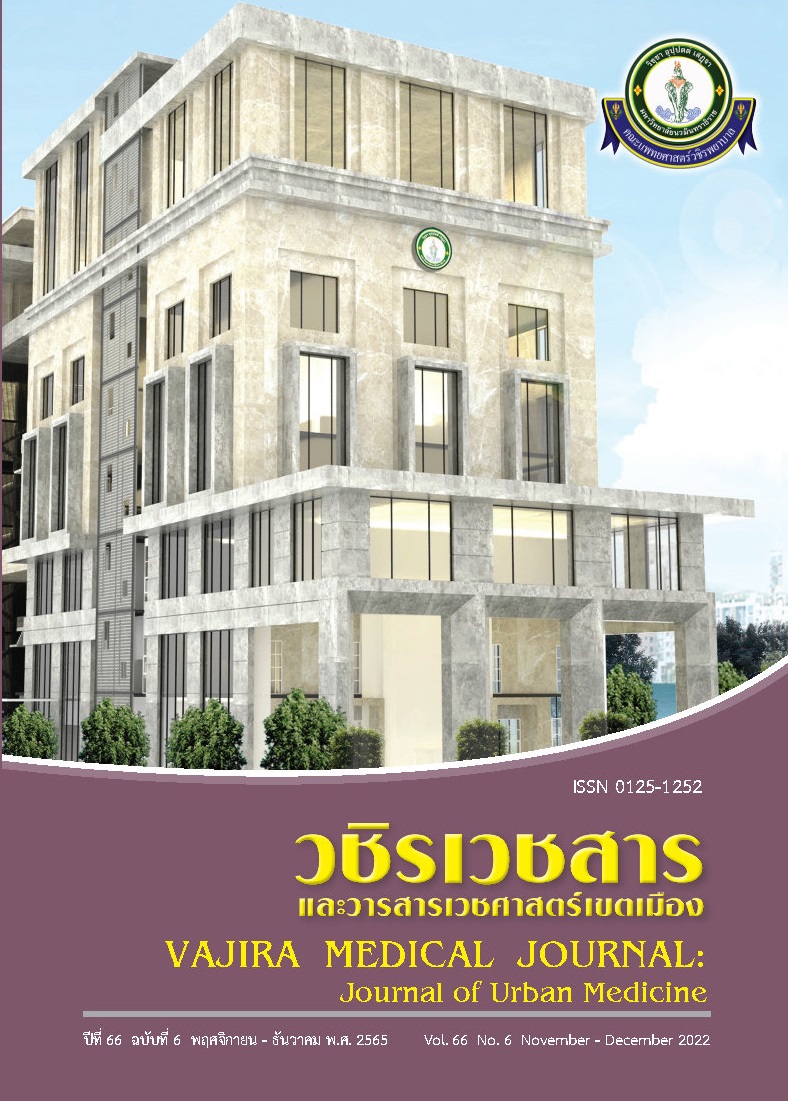Stress Shielding in the Proximal Tibia after Total Knee Arthroplasty: A Finite Element Analysis of 2- and 4-mmthick Tibia Prosthesis Models
Main Article Content
Abstract
Objective: Proximal tibial bone resorption and osteolysis after total knee arthroplasty occur despite improved design and manufacturing processes. We utilized finite element analysis to study these phenomena.
Methods: We use SOLIDWORKS 2018 software to study stress and displacement of normal tibias and tibias implanted with a 4-mm-thick CoCr tibial tray (4mm-tray) or 2-mm-thick titanium alloy (2mm-tray). Under vertical loads of 1000 or 2000 N, the stress and displacement of both tibia tray models were analyzed. Stress on the supported proximal tibia 1 and 2 cm beneath the surface was analyzed and compared to stress in a normal tibia.
Results: Stress concentrated around the central region compared to the peripheral region in all models, which caused more deformation of the material in the central region. However, the 4mm-tray exhibited a more rigid construct compared to the 2mm-tray. Under any load, the 2mm-tray exhibited more tray deformation, with a central–peripheral deformation difference of approximately five times more than the deformation difference for the 4mm-tray. Moreover, stress on the peripheral region of the supported proximal tibia was only 18–22% of that of a normal bone for the 4mm-tray compared to 54–66% for the 2mm-tray.
Conclusion: Both tibial tray implant models exhibited some degree of stress shielding on the peripheral region of the supported proximal tibia. However, the greater modulus and thicker baseplate construct of the 4-mm CoCr tray exhibited a profound stress shielding effect. This stress shielding may correlate with a higher incidence of proximal tibia bone loss.
Downloads
Article Details

This work is licensed under a Creative Commons Attribution-NonCommercial-NoDerivatives 4.0 International License.
References
Jorgensen NB, McAuliffe M, Orschulok T, Lorimer MF, de Steiger R. Major aseptic revision following total knee replacement: a study of 478,081 total knee replacements from the Australian Orthopaedic Association National Joint Replacement Registry. J Bone Joint Surg Am 2019;101(4):302-10.
Australian Orthopaedic Association National Joint Replacement Registry (AOANJRR). Hip, knee&shoulder arthroplasty: 2020 annual report. Adelaide: AOANJRR; 2020.
Deen JT, Clay TB, Iams DA, Horodyski M, Parvataneni HK. Proximal tibial resorption in a modern total knee prosthesis. Arthroplast Today 2017;4(2):244-8.
Martin JR, Watts CD, Levy DL, Miner TM, Springer BD, Kim RH. Tibial tray thickness significantly increases medial tibial bone resorption in cobalt-chromium total knee arthroplasty implants. J Arthroplasty 2017;32(1):79-82.
Yoon C, Chang MJ, Chang CB, Song MK, Shin JH, Kang SB. Medial tibial periprosthetic bone resorption and its effect on clinical outcomes after total knee arthroplasty: cobalt-chromium vs titanium implants. J Arthroplasty 2018;33(9): 2835-42.
Kutzner I, Hallan G, Høl PJ, Furnes O, Gøthesen Ø, Figved W, et al. Early aseptic loosening of a mobile-bearing total knee replacement. Acta Orthop 2018;89(1):77-83.
Ahir SP, Blunn GW, Haider H, Walker PS. Evaluation of a testing method for the fatigue performance of total knee tibial trays. J Biomech 1999;32(10):1049-57.
Au AG, James Raso V, Liggins AB, Amirfazli A. Contribution of loading conditions and material properties to stress shielding near the tibial component of total knee replacements. J Biomech 2007;40(6):1410-6.
Osano K, Nagamine R, Todo M, Kawasaki M. The effect of malrotation of tibial component of total knee arthroplasty on tibial insert during high flexion using a finite element analysis. ScientificWorldJournal 2014;2014:695028.
Enab TA, Bondok NE. Material selection in the design of the tibia tray component of cemented artificial knee using finite element method. Materials & Design 2013;44:454-60.
Wehner T, Claes L, Simon U. Internal loads in the human tibia during gait. Clin Biomech (Bristol, Avon) 2009;24(3):299-302.
Silva JD, Nunes B, Duarte F, Raposo F, Valente L, Antunes A, et al. Effect of tibial alignment in early failure in total knee arthroplasties. Revue de Chirurgie Orthopédiqueet Traumatologique 2016;102(7 Suppl):S80.
Keohane D, Power F, Cullen E, O'Neill A, Masterson E. High rate of tibial debonding and failure in a popular knee replacement: A cause for concern. Knee 2020;27(2):459-68.
Grupp TM, Kaddick C, Schwiesau J, Maas A, Stulberg SD. Fixed and mobile bearing total knee arthroplasty--influence on wear generation, corresponding wear areas, knee kinematics and particle composition. Clin Biomech (Bristol, Avon) 2009;24(2):210-7.
Minoda Y, Hata K, Ikebuchi M, Mizokawa S, Ohta Y, Nakamura H. Comparison of in vivo polyethylene wear particles between mobile- and fixedbearing TKA in the same patients. Knee Surg Sports Traumatol Arthrosc 2017;25(9):2887-93.
Sadauskas A, Engh C 3rd, Mehta M, Levine B. Implant interface debonding after total knee arthroplasty: a new cause for concern? Arthroplast Today 2020;6(4):972-5.
Cho BW, Kwon HM, Hong YJ, Park KK, Yang IH, Lee WS. Anatomical tibial component is related to more medial tibial stress shielding after total knee arthroplasty in Korean patients. Knee Surg Sports Traumatol Arthrosc 2021;29(3): 710-7.


